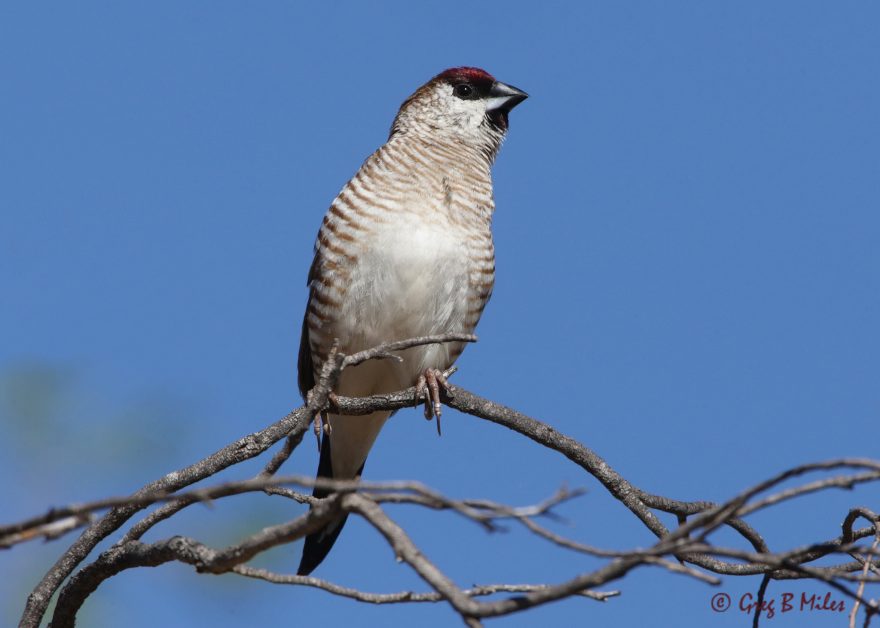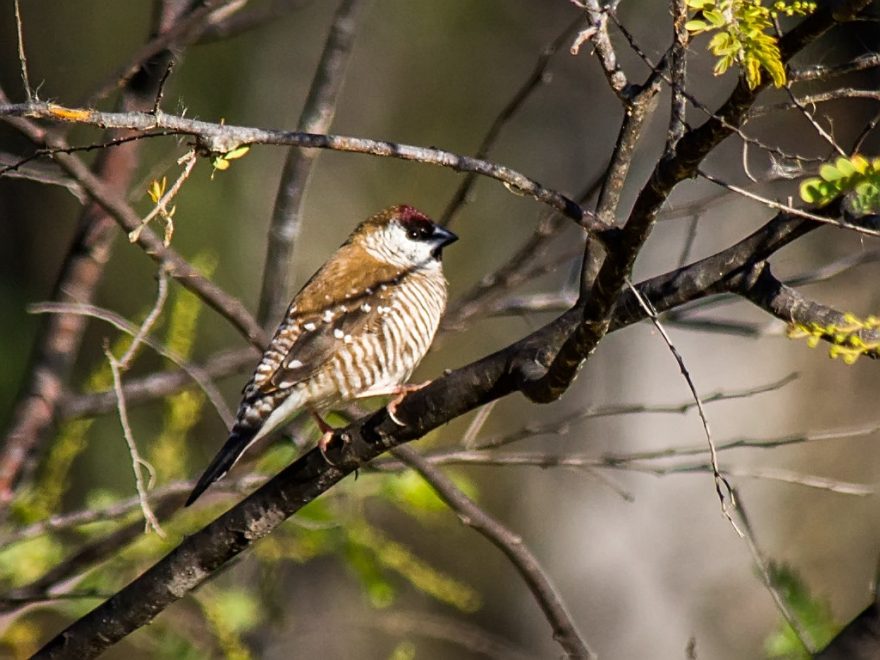The Plum-headed finch, sometimes called the Cherry finch, is an Australian finch species found in subtropical habitats in Queensland and inland New South Wales. They are relatively common in Australian aviculture, but are less popular than other species because of their protected status (sometime requiring a permit) and somewhat dull coloring. The species is uncommon — but nevertheless available — in the United States and Europe.

Housing & Compatibility
Plum-headed finches can be housed successfully as single pairs, a colony, or as part of a mixed collection. They prefer a large planted aviary, but are generally tolerant of smaller aviaries or even a large flight cage. Prolonged cold and wet conditions will not be tolerated; so the aviary should be designed to provide good drainage, shelter and access to natural sunlight.
Plum-headed finches can be destructive to shrubs and grasses, especially when housed in large groups. It may be necessary to limit the number of pairs in each planted aviary, or alternatively, plant grasses in pots so that they can be periodically removed to recover.
Plum-headed finches can successfully be housed with most placid finches, quail, doves, and (space permitting) Neophema parrots.
Diet & Feeding
A quality seed mix including canary seed, various millets and panicum forms the basis of the Plum-headed finch’s diet. Seed lacks many essential vitamins and minerals which must be compensated for by introducing other foods. Sprouted seed increases the nutritional value of seed and is a cheap way to improve your birds health. Freshly grown green seed heads should also be offered frequently.
Leafy greens such as kale, bok choy, endive and silverbeet are in important part of the Plum-headed finch’s diet. Spinach can also be given, but only sparingly as it can contribute to calcium deficiency.
Live food is not absolutely necessary but will be readily consumed during the breeding season. Small mealworms and termites are most frequently given.
Do not feed anything from the list of forbidden foods.

Breeding
Plum-headed finches breed best in spring and autumn, with a hen bird that is at least 12 months of age. They can be fussy about mate selection, so allowing pairs to form naturally will likely result in better breeding results. Pair bonds are strong. After the death or replacement of a mate, it may take some time for the remaining bird to accept a new partner.
They typically lay 3-6 eggs in each clutch, which are incubated by both parents for approximately 13 days. Young birds fledge the nest at three weeks of age and are usually independent a month later.
A wide variety of artificial nests will be accepted, though they have a preference for a dense shrub just above ground level. They will construct a dome-shaped nest from fine strands of dry grass. Plum-headed finches demand privacy to breed successfully and will not tolerate nest inspections.
Sexing
Male Plum-headed finches have a red spot on their forehead and a black spot on their chin. Females do not have a purple patch on their throat; they also have a white brow above their eyes.
Health
A strict worming and parasite control regime is essential to ensure the long-term health of any finch collection. Plum-headed finches can be expected to live for 6-8 years.